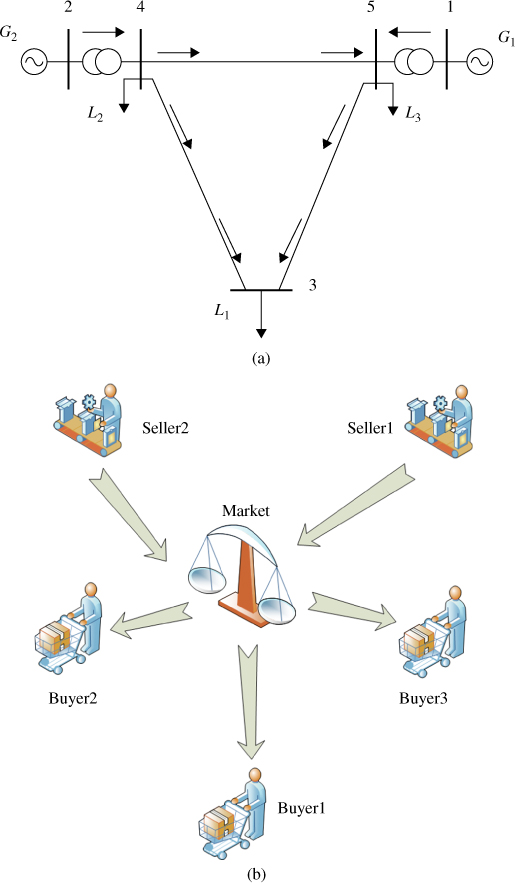Preface
The approaches of large-scale system optimization have long been applied to power system planning and operation, and there is extensive literature on such optimization. On the other hand, optimization is also the basic tool for electricity markets, and is often used with microeconomic models. However, people seldom look at physical power systems and economic market systems in microeconomics from a unified system point of view. In fact, both are large-scale distributed systems, and there are intrinsic connections between optimization approaches of power systems and microeconomics (Figure 0.1). In general, a power system (an engineering system composed of generators, loads, and transmission lines) and a microeconomic system (a social system composed of producers, consumers, and markets) have many common characteristics, such as the following:
- they both consist of subsystems interconnected together,
- more than one controller or decision-maker is present, resulting in decentralized computations,
- coordination between the operation of the different controllers is required, resulting in hierarchical structures, and
- correlated but different information is available to the controllers.

Figure 0.1 Analogy between a power system and a market system.
Many optimization approaches have been developed for power system planning and operation, such as linear programming, nonlinear ...
Get Power System Optimization now with the O’Reilly learning platform.
O’Reilly members experience books, live events, courses curated by job role, and more from O’Reilly and nearly 200 top publishers.

